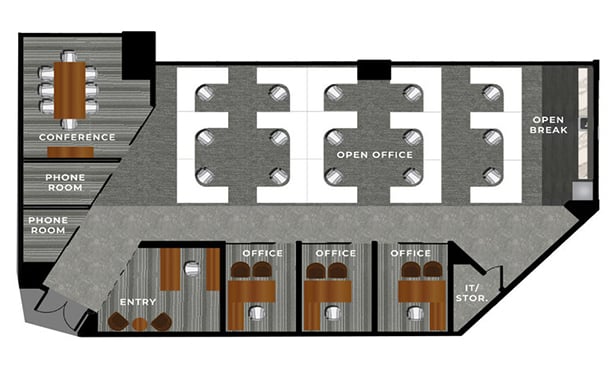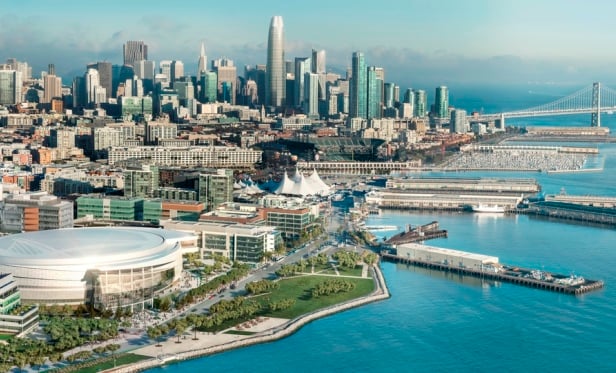NEW YORK CITY—In response to President Donald Trump's decision earlier this year to withdraw from the Paris climate accord, New York City Mayor Bill de Blasio has released a far-reaching proposal to meet those plan's greenhouse gas reduction targets.
The plan entitled “1.5°C: Aligning New York City With the Paris Climate Agreement” lists actions the city will take in the next three years to accelerate greenhouse gas reductions and put the city on a path to deep de-carbonization. The plan reinforces building code changes and energy reduction targets for large buildings and city-owned buildings to meet in the coming years. The mayor detailed his plans and energy reduction mandates last month. The 1.5°C plan is the first Paris agreement-compliant plan from any city in the world, city officials say.
“Big problems require big solutions—and New Yorkers are already hard at work to meet the most ambitious goals of the Paris Agreement,” says Mayor de Blasio. “In the Trump era, cities have to lead the way when it comes to fighting climate change. Hotter summers and powerful storms made worse by climate change are an existential threat to a coastal city like ours, which is why we need to act now.”
The city's real estate sector will be a major contributor to helping the city reduce greenhouse gases. The mayor's proposal calls for significant building energy performance upgrades as well as deep energy retrofits in city-owned buildings.
The plan states that the city will pursue legislation that would require all large buildings limit fossil fuel use below intensity targets by 2030 and 2035. “This is the single largest action the city will implement to reduce GHG emissions and will affect over half the built floor area in NYC. This action will also require setting energy intensity requirements that take into consideration impacts on utilities, specific tenant uses and economic activity,” the report states.
The benefits of these reductions will avoid 40 premature deaths, 100 emergency room visits annually through air quality improvements and will result in the creation of 17,000 construction-related jobs by 2030, the report states.
The plan also states that the de Blasio administration will urge the New York City Council to adopt “stretch” versions of the energy code in 2019 and 2022, which could realize between a 20% and 40% energy intensity reduction.
“Beginning in 2025, all new large buildings would be required to build to very low energy design targets,” the report states.
In terms of retrofits to city-owned buildings, the mayor is calling for the acceleration of the pace of retrofit work on top of the $2.7 billion already committed by the city. The plan calls for the launch of a new program to prioritize buildings across all city agencies and also commits agencies to achieve an additional 20% energy reduction across their respective portfolios by 2025.
The plan also calls for the establishment of a Property Assessed Clean Energy (PACE) financing program for building owners seeking to undertake energy savings upgrades. The program has the potential to finance $100 million in building energy upgrade projects annually.
Another new initiative outlined in the mayor's plan is a program to support the real estate industry in implementing low energy design for new construction and substantial renovations. The city states it will release a free planning tool for high performance energy retrofit strategies for existing buildings to achieve significant energy reductions.
The 1.5°C plan aligns local climate actions with a goal to limit global warming to 1.5°C degrees, city officials say. A 1.5°C degree outcome was agreed to in the Paris Agreement in order to limit the worst impacts of climate change. By implementing the identified prioritized set of actions across energy, transportation, building, and waste sectors by 2020, New York City hopes to implement faster reductions of green house gases over the next 30 years than goals in the city's “80 x 50″ plan, which involve a plan to reduce GHG emissions by 80% by 2050. The potential for GHG reduction of all the quantified actions in the report is 10 million metric tons of C02e—or the equivalent of taking more than 2 million cars off the road by 2030, city officials state.
The plan entitled “1.5°C: Aligning
“Big problems require big solutions—and New Yorkers are already hard at work to meet the most ambitious goals of the Paris Agreement,” says Mayor de Blasio. “In the Trump era, cities have to lead the way when it comes to fighting climate change. Hotter summers and powerful storms made worse by climate change are an existential threat to a coastal city like ours, which is why we need to act now.”
The city's real estate sector will be a major contributor to helping the city reduce greenhouse gases. The mayor's proposal calls for significant building energy performance upgrades as well as deep energy retrofits in city-owned buildings.
The plan states that the city will pursue legislation that would require all large buildings limit fossil fuel use below intensity targets by 2030 and 2035. “This is the single largest action the city will implement to reduce GHG emissions and will affect over half the built floor area in NYC. This action will also require setting energy intensity requirements that take into consideration impacts on utilities, specific tenant uses and economic activity,” the report states.
The benefits of these reductions will avoid 40 premature deaths, 100 emergency room visits annually through air quality improvements and will result in the creation of 17,000 construction-related jobs by 2030, the report states.
The plan also states that the de Blasio administration will urge the
“Beginning in 2025, all new large buildings would be required to build to very low energy design targets,” the report states.
In terms of retrofits to city-owned buildings, the mayor is calling for the acceleration of the pace of retrofit work on top of the $2.7 billion already committed by the city. The plan calls for the launch of a new program to prioritize buildings across all city agencies and also commits agencies to achieve an additional 20% energy reduction across their respective portfolios by 2025.
The plan also calls for the establishment of a Property Assessed Clean Energy (PACE) financing program for building owners seeking to undertake energy savings upgrades. The program has the potential to finance $100 million in building energy upgrade projects annually.
Another new initiative outlined in the mayor's plan is a program to support the real estate industry in implementing low energy design for new construction and substantial renovations. The city states it will release a free planning tool for high performance energy retrofit strategies for existing buildings to achieve significant energy reductions.
The 1.5°C plan aligns local climate actions with a goal to limit global warming to 1.5°C degrees, city officials say. A 1.5°C degree outcome was agreed to in the Paris Agreement in order to limit the worst impacts of climate change. By implementing the identified prioritized set of actions across energy, transportation, building, and waste sectors by 2020,
Want to continue reading?
Become a Free ALM Digital Reader.
Once you are an ALM Digital Member, you’ll receive:
- Breaking commercial real estate news and analysis, on-site and via our newsletters and custom alerts
- Educational webcasts, white papers, and ebooks from industry thought leaders
- Critical coverage of the property casualty insurance and financial advisory markets on our other ALM sites, PropertyCasualty360 and ThinkAdvisor
Already have an account? Sign In Now
*May exclude premium content© 2024 ALM Global, LLC, All Rights Reserved. Request academic re-use from www.copyright.com. All other uses, submit a request to [email protected]. For more information visit Asset & Logo Licensing.









